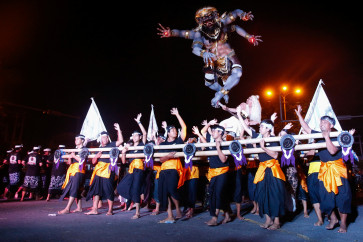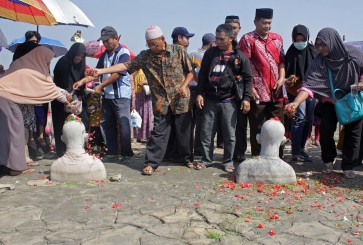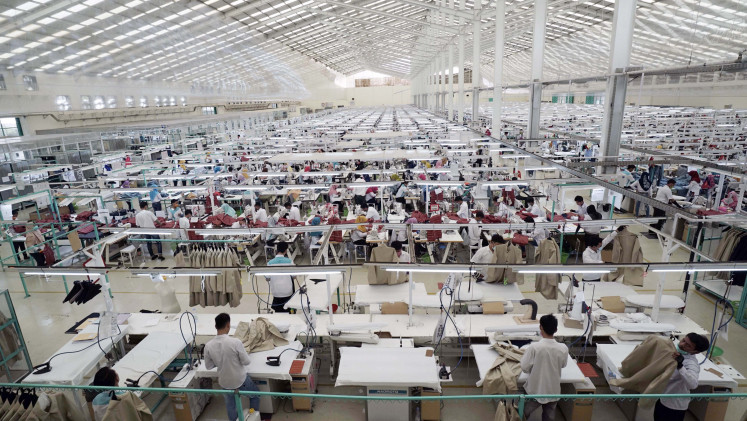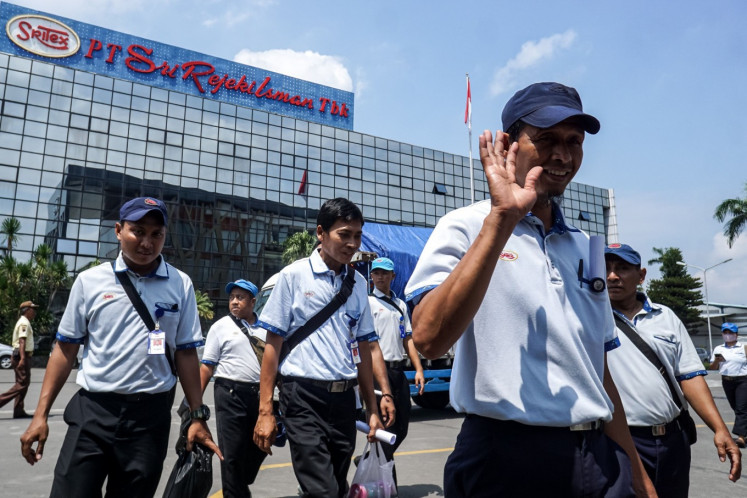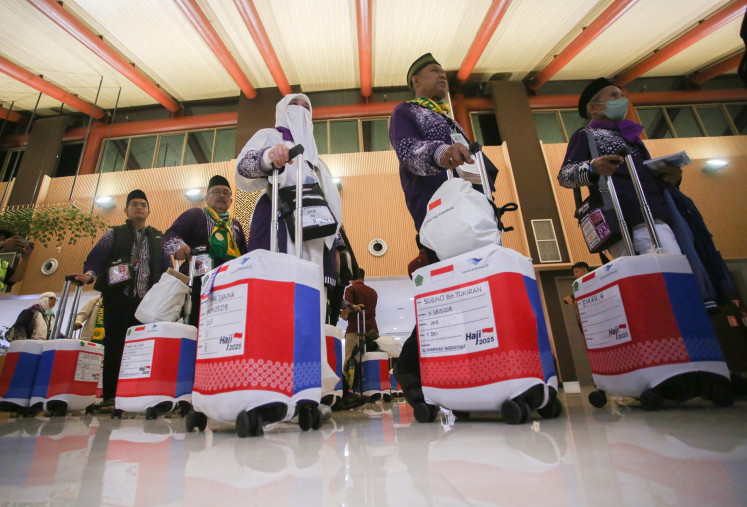Step by green step
Groundbreaking: The University of Indonesia’s planned revamped Central Library, shown here in an artist’s impression, will be mostly covered with grass and will have a range of environmentally friendly features
Change text size
Gift Premium Articles
to Anyone

Groundbreaking: The University of Indonesia’s planned revamped Central Library, shown here in an artist’s impression, will be mostly covered with grass and will have a range of environmentally friendly features. Courtesy of Denton Corker Marshall
In a city that has long ignored notions of "green" in its vigorous development projects, every morsel of attention given to environmental sustainability is a baby step toward real change.
It was not until last year that the phrase "green building" or "green architecture" entered the vocabulary of stakeholders in Jakarta's urban development, whether government officials, property developers, architects or building consultants.
And perhaps this year will see real change beginning to happen, with the city able to claim at least two architectural projects with features that conform, at least in part, to the concept of green building.
For a building to be labeled "green", it must start with appropriate planning that takes on a holistic approach across all phases from planning, construction and operation through to demolition.
It is essential that factors such as location, microclimate, supporting structure and the materials used are also analyzed and examined for their effect on the construction as a whole.
Allianz Tower, a planned office building in South Jakarta's Kuningan, might not be perfectly green according the above definition, but at least on paper, it boasts several features that take into account environmental aspects rather than mere commercial ones.
"For a start, we are only using 30 percent of the site for the building, including the basement," Allianz Tower architect Budiman Hendropurnomo said. "The rest is for greenery which can absorb water."
While this might seem like a minor aspect, for the commercial property sector in Jakarta, it's a sign of a big shift on the part of the property developer, as most would prefer to maximize their building space.
As building developer Permata Medialand director Thomas Sigit said, "It is part of our social responsibility from the environmental angle." On paper, the recently started project also claims it will have a heat- and noise-reducing double-glazing system for its fa*ade, a rainwater harvesting system on its roof, energy-saving LED and T5 fluorescent lighting and its own wastewater treatment facility.
"Some 80 percent of waste water from the building will be treated internally, while we will still have to send the rest to the city waste water treatment plant," explained Budiman, director of architecture firm Denton Corker Marshall (DCM).
As well as allowing companies to make social responsibility claims, the shift toward green building may also be due to mutual interests between businesses and their customers.
Green building campaigners have often said that the drive toward change should start from the bottom up, meaning that consumers should be able to initiate the building of more environmentally friendly architectural projects.
That is exactly what happened with the Allianz Tower project, with its future anchor tenant, German-based financial services giant Allianz, requiring its office to be environmentally sustainable. And the developer is complying.
"I'm fortunate to have this kind of client. It's rare," Budiman said.
The Allianz Tower developer is indeed treading a different path to that taken by most developers. Whether the developer is being a trailblazer in terms of the green trend or using the trend as marketing gimmick will be revealed later when the building is in operation.
But, for green building proponents, it's already a step forward.
"Our greatest challenge is educating clients and building owners," said Paramita Hadiprana, a co-founding member of the Green Building Council Indonesia (GBCI). "Even if they are interested in the concept, most of them back off knowing that they have to pay significant initial costs."
Amid concerns of the exploitation of "green" as a marketing gimmick for commercial buildings, more environmentally friendly features have financial benefits - in the long run.
Paramita explained that most green buildings abroad have higher lease rates, faster sellouts, better marketing opportunities for environmentally conscious tenants and community recognition.
Chief business development officer of property consultants Procon Indah, Hendra Hartono, added that currently only around a handful of office buildings in Jakarta are embracing the green building concept, even as tenant demand for them is on the rise.
If this shift toward a greener urban development is being undertaken by producers and consumers, what role does or should the government have?
In the case of Allianz Tower, the Jakarta Building Supervisory Agency has, unusually, taken a cautious positive step.
Last week the agency summoned the building developer and the architect to explain more about the project and to remind them not to hastily label their project green before any assessment is done.
Assessment is an important part of green buildings to ensure real compliance. According to the US Green Building Council, a certified Green Buildings Ratings System recognizes and promotes green building design through a holistic building approach.
This approach involves site sustainability, water and energy conservation and reduction, materials and resources, as well as indoor environmental quality.
However, an assessment system for environmentally sustainable buildings in Jakarta is still in the making. The GBCI is currently drafting the so-called Green Rating System in reference to a rating system established by its Australian counterpart.
This rating system is badly needed as more projects are proclaiming themselves "green" - and thus in need of solid assessment.
The University of Indonesia's revamped Central Library is another example of a green building project.
To be built on a 2.5-hectare block of land, most parts of the library will be covered by grass. Also designed by DCM, the library will feature a solar power system for some parts of the building.
The eight-story building project, which will cost around Rp 100 billion, will also have energy-saving features, a water-saving piping system and a no-plastic environment.
"It is not easy to design a fully environmentally friendly building in Indonesia," Budiman admitted. "The materials, for example, will still have to be imported, thus from a carbon footprint point of view it is not really environmentally sound."
While building green projects in Greater Jakarta remains fraught with challenges, building them in places such as Bali allows more room to experiment.
One example is DCM's Maya Ubud resort project.
"Our last resort project in Ubud got most of its building materials from the surrounding environment from the recycled timber to the roof cover," Budiman said.
Drawing on the concepts in ancient Balinese architecture, it indeed proved easier for DCM to be more environmentally sensitive in designing the resort as the genius loci of native architectural building methods is already one rich in green features.
The use of bamboo, rice paddy stems and grass as the roof cover, for example, is suitable in the tropical climate as the materials provide perfect heat absorption.
It certainly isn't easy building green, but that hasn't stopped those who believe from pursuing it. The question remains of just how many more will follow.

